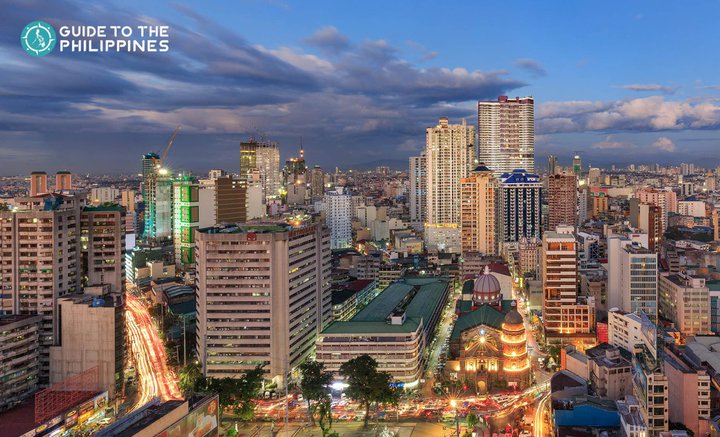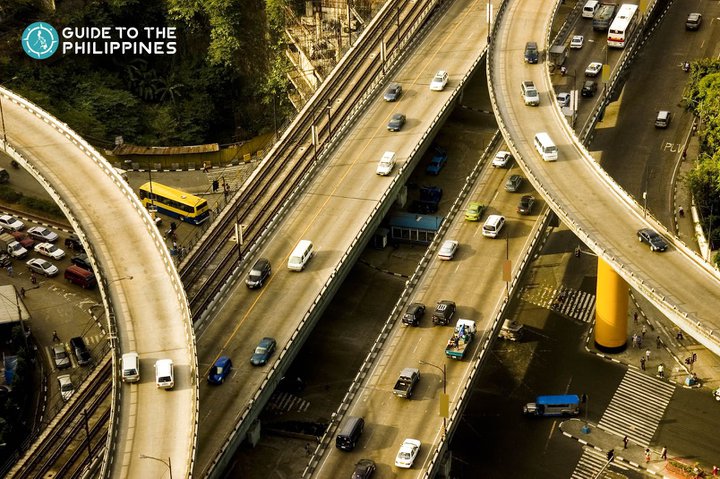Manila Travel Guide: Everything You Need to Know
Visit the bustling metropolitan center of the Philippines, Manila! Learn how to get around, top tourist spots that you should visit, best places to stay in, and where to eat in this guide.
Manila serves as the center of culture, economy, education, and government in the Philippines. It is the most populous region of the country and one of the most densely populated in the world. It is also the main gateway for international travelers going to the Philippines by flight.
- Find the best Manila trips and experiences that you can add to your itinerary
When you say “Manila,” it can mean two things. First, it can refer to the City of Manila, the capital of the Philippines. Manila is made up of 16 administrative districts, including Binondo, Ermita, Intramuros, Malate, and Quiapo, among others.
Second, the greater Metropolitan Manila area is also referred to as Manila. It is officially known as the National Capital Region (NCR) or Metro Manila. It is made up of the City of Manila, Makati, Quezon City, Parañaque, Pasay, and Taguig, to name a few.
It can be a bit confusing. Make sure to do your research beforehand, so you don't end up staying in an area far from the main attractions you want to visit.
In this ultimate guide, we’ll refer to Manila as not just the City of Manila but also Metro Manila and the other big cities in the Philippines' bustling urban center. You’ll learn about Manila’s top tourist spots, the best way to get around, where to stay, where to eat, and travel tips. Read on to start discovering Manila.
Best Time to Go to Manila
Manila is a great destination, all-year-round. Unlike island destinations in the Philippines, you can still do activities here during the rainy season.
But if you want to experience Manila including its outdoor attractions fully, take note of the months with the sunniest days. Read on to find out when are the best seasons to go to Manila, what's the climate and weather like, and what to wear:
Holiday Season | September to December
The best months to go to Manila is during the -ber months of September, October, November, and December when the city is full of festive lights and Christmas decorations.
It is also cooler during these months, which is great if you’re planning to do a lot of walking around. However, traffic can get worse than usual during the Christmas season. It is also during this time when a lot of people flock the malls for their holiday shopping.
Dry Season | January to April
If you have a lot of outdoor destinations included in your Manila itinerary, it's best to explore during the dry months of January to April.
While there are rainfalls throughout the year in Manila, January to April has the least chances of rain. Make sure to bring water bottles, caps, and an umbrella with you if you're planning to do a lot of walking in Manila.
Climate and Weather
During the dry season, the temperature in Manila is warm. Take note that the hottest months in Manila, are typically from April to May, with an average daily high temperature above 33°C.
If you plan to visit during these months, always bring a bottle of water to keep yourself hydrated while exploring Manila. Additionally, make sure to check for weather updates and the forecast on the days of your trip.
Here's an overview of the average monthly Manila temperature and rainfall.
What to Wear
When visiting Manila, expect a tropical climate. So dress in casual breathable clothes, especially during the dry months. If you're in the malls or outdoors at night, especially during the holiday season or rainy season, it's best to bring a light jacket with you to keep you warm.
How to Get to Manila
Manila is accessible from both international and local destinations by flights. You will be landing in one of the four terminals of Manila Airport, specifically in either Pasay City or Parañaque City, depending on the airline.
Note that there are four terminals or airports in Manila, which are not connected by subway systems. It can be confusing for many first-time visitors, so make sure to find out which airport you're landing in before making transfer arrangements.
See our popular Manila Transfers
Getting Around Manila
Exploring Manila by public transportation can be overwhelming, but don’t worry, we’ve got you covered in this section. First, you have to find your way to your hotel once you arrive at the airport. Then you also have to learn how to get around the city by using public transportation. Read on and take notes.
From the Airport
The Ninoy Aquino International Airport Terminal 1 is located in Parañaque City, while Terminals 2, 3, and 4 are in the neighboring Pasay City.
The metro or subway system does not connect these airport terminals as of the moment. The only way to get there and out is via private transport, shuttle buses, or taxicabs.
By Bus
There is a free shuttle bus going to all terminals that runs every 15 minutes, depending on traffic. Given the heavy traffic in Manila during the day and early evening, it may not be the best idea if you are pressed for time (e.g., if you have a connecting flight with a layover less than 4 hours).
You can also take the Airport Loop buses from all terminals. It will take you from the airport to Baclaran, Pasay Rotonda, Taft Avenue station of the Manila Metro Rail Transit System (MRT), and Manila Light Rail Transit System (LRT) in Pasay. Taft Avenue is the closest light rail station from the airports. Both MRT and LRT1 have a Taft Station and is connected by a walkway.
Another option is the P2P (Point-to-Point) buses called the UBE Express. Fares vary depending on your destination. These buses run on four fixed routes, stopping at selected hotels and shopping malls, while other buses stop at big bus terminals. Check the P2P bus schedules here.
By Taxi/Cabs
All Manila airports have taxi stands. You can ride the following:
-
Regular Taxi - White metered taxi/cabs with a fixed flag down rate and per kilometer fee.
-
Coupon Taxi- Blue-marked white taxi/cabs that are dispatched by airport personnel and charge a fixed price
-
Yellow Airport Taxi - Metered taxi with the fixed flag down rate and per kilometer fee, but almost double than the regular taxi.
Taxi scams at the airport are common. If the driver shows you a printed list of destinations and their corresponding prices, be warned that those rates are most probably overpriced.
Another red flag is when the driver doesn't use a meter and charge you ridiculous prices. To avoid the headache of getting scammed, use the official taxis (coupon taxi and yellow airport taxi).
When someone outside the arrival area offers you a ride, say no. Often, these drivers (or their middlemen) will overcharge you. They might offer to help you with your bags, keep a tight grip on your belongings and say no, or ignore them.
By Car Booking App
Another recommended way to get out of the airport and into the city is through Grab, a ride-hailing app similar to Uber (Uber is no longer operating in the Philippines).
Grab offers GrabTaxi (accredited regular metered taxi), GrabCar (private), and GrabShare (carpooling). Download the Grab App before arriving in the Philippines in case the airport Wi-Fi fails.
By Car Rental
There are car rental services in Manila that you can avail of. These are also available in all Manila airports (except Terminal 4). You can book these in advance so you can pick up the car at the airport or their designated pick-up points in Manila.
If you're driving in Manila, we highly recommend using GPS navigation apps like Google Maps and Waze. Traffic in Manila needs a lot of patience and excellent driving skills, so make sure to prepare yourself if you're driving here for the first time.
Public Transportation
For first-time visitors, Manila can be a bit overwhelming to explore by public transportation. When exploring Manila tourist spots, you’ll need to learn about the several types of public transit that ply the roads of this bustling metropolis.
The fastest way of getting around is the monorails. Three monorails are operating in Manila, namely, Manila Metro Rail Transit (MRT), Light Rail Transit 1 (LRT1), Light Rail Transit 2(LRT2). The other modes of transportation are the tricycle and jeepney, both unique to the Philippines.
You can also hail a taxi/cab or use car booking apps or a motorcycle booking app if you want to explore Manila. Read on for more details about your public transportation options in Manila.
MRT and LRT
The Manila Metro Rail Transit (MRT) and Light Rail Transit (LRT) run across major roads in Manila and connect Manila's north and south areas. The MRT traverses Epifanio de Los Santos Avenue (EDSA), while LRT1 and LRT2 have routes crossing Pasay, Manila, Caloocan, and Quezon City.
If your hotel is somewhere in the city of Manila, Makati, Pasay, or even Quezon city, you can ride the MRT or LRT. Be warned though that the MRT and LRT are very crowded during rush hour (7 AM to 9 AM and 5 PM to 9 PM on weekdays).
However, if you travel during the off-peak hours, the MRT and LRT offer the quickest way to slice through Manila's notorious traffic jams.
You can purchase single-journey tickets/cards (one way) or stored value cards (reloadable BEEP cards) in any station in MRT, LRT1, and LRT2. Reloading can be done at any station, as well.
The single-journey tickets are exclusively used in each line where you purchased them, while the reloadable BEEP cards can be used in all three lines. If you'll be riding the MRT and LRT a lot while in Manila, purchasing a BEEP card is highly recommended.
Read on below to learn more about the MRT and LRT.
MRT
MRT runs along EDSA, starting in Taft Avenue to North Avenue in Quezon City. This line gives travelers access to Roxas Blvd., Makati, Mandaluyong, San Juan, and Quezon City. You can take this line if you want to explore Makati tourist spots and Quezon City attractions.
LRT1 and LRT2
There are two LRT routes, LRT1 and LRT2. LRT1 is the first among the three light rails in the Philippines, while LRT2 is the newest. A walkway in Doroteo Jose station connects LRT1 and LRT2.
LRT1 runs from Baclaran to Monumento. It lets you explore areas in Roxas Boulevard or Pasay area, Makati, Manila, and Caloocan. Beyond Caloocan are mainly residential areas, not frequented by travelers.
LRT1 cuts through most of the city of Manila, which makes it the best transit to ride to get to popular Manila attractions such as Binondo, Intramuros, and Rizal Park.
LRT 2 has the shortest route. It runs through Metro Manila's East to West areas. It starts in Manila and ends in Marikina City, with stops along Quezon City and San Juan City. LRT2 may be the shortest line, but it can still take you to Manila tourist spots. You can ride the LRT2 to get to Binondo and San Sebastian Church in Intramuros, which is the only all-metal building in the country.
Jeepneys
Jeepneys or jeeps are the most popular means of public transportation in the Philippines along major and some small roads. These are initially the U.S.- made military jeeps left over from World War II.
Jeepneys have become an iconic symbol of Philippine culture and art. These can accommodate up to 20 passengers, depending on the size of the jeepney. Riding these open-aired vehicles in the streets of Manila offers an interesting experience for first-time visitors.
You can hail these anywhere in most Manila roads, but take note if there are designated loading and unloading stations in the area. Each jeepney has a sign in its windshield that indicates its last stop and 1 or 2 other significant stops along its route. Find out first which route you need to take before riding a jeepney.
Payments are handed to the driver at the front during the ride. If you're seated at the far end of the jeepney, the other passengers can pass it to the driver for you.
Locals say "Bayad po, " (Here's my payment) when handing the money to the driver. It is so the driver can compute how much your fare is since it varies on your pick-up point and destination.
When you're about 5-10 meters away from your stop, locals will say "Para po!", (Please stop) to notify the driver to slow down and stop at the nearest unloading station.
Tricycle
Motorized tricycles, or simply tricycles, are the local form of the auto-rickshaw similar to Thailand’s tuk-tuk. These public utility vehicles ply a set route in inner roads. They are usually found in terminals where passengers lineup to wait for their turn to board one.
These can also be hired like taxis in some areas if their route allows it. Built-in a variety of styles that differ from city to city, these are usually made locally by building a sidecar affixed to a motorcycle. These can accommodate 2-4 passengers only.
Taxi or Car Booking App
For those who only have a short time in the city and want a hassle-free journey, the best option is to take a taxi or book Grab using the Grab App.
While Grab is usually more expensive than riding jeepneys or buses, these can ensure you can get around safely and in comfort. You don't have to do multiple transfers, which is convenient for travelers coming from and going to the airport.
Motorcycle Booking App
More adventurous travelers can choose to book with the Angkas app, which is similar to Grab Motorbike in other countries like Vietnam.
If you are traveling solo, you can use the app to hire a "rider" to pick you up and take you to your desired location. It is especially significant if you are in a hurry since motorcycles can navigate through heavy traffic easily.
0 Likes1 Reply
Thanks.


























